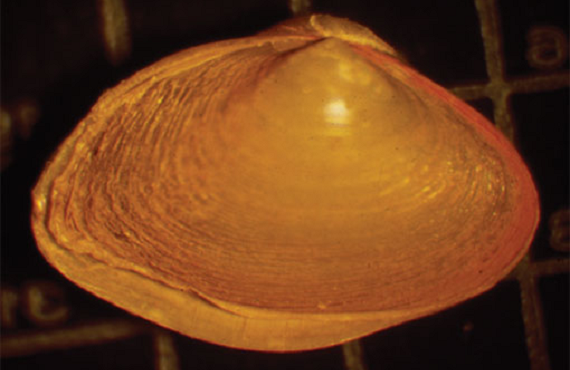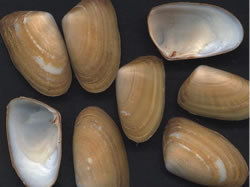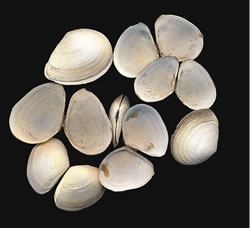Asian clam
The Asian clam (Potamocorbula amurensis) is a small shellfish (2 - 3cm) that can survive in freshwater and saltwater. It is highly adaptable and can form extremely dense aggregations on most areas except hard surfaces. It is commonly mistaken for the common pipi species found along the coast.
The Asian basket clam is listed as prohibited matter under the NSW Biosecurity Act 2015 and is considered a major threat to native fauna and the environment. It may not be brought into NSW or released or allowed to escape into any waters in NSW.
Reporting
If you think you have seen an Asian clam in NSW, please take several clear, high resolution photos of the clam. For identification, we need to see the:
- Shell overbite (where the smaller shell meets the larger shell)
- Clam size – please include something for reference (e.g. a coin)
- Shell colour and markings
Please send photos to aquatic.biosecurity@dpi.nsw.gov.au, along with details of when and where the clam was seen.
Identification
Key features:
- Thin smooth shell; older shells appear wrinkled on shell surface
- White, tan or yellow in colour
- 2-3cm in length
- Shell of unequal size – one side is larger than the other
Known locations:
- Not recorded in Australia
Habitat:
- Mostly subtidal but also intertidal
- Can be found in marine, estuarine and freshwater habitats
- occurs in all sediment types including mud, peat, clay, sand but most commonly found on mixed mud/sand bottoms
Impacts:
- Competes with native species for food and space
- Reduces planktonic food sources
- Can form dense layers
Similar native species
These native species may be confused with this marine pest and do not need to be reported. But if unsure, take a photo and let us know.
Narrow wedge shell (Paphies species)

Key features:
- White/cream shell with brown covering
- Interior of shell is white
- Up to 2.5cm long
Habitat:
- Sandy intertidal
Tellina semitorta (Semelangulus tenuiliratus)

Key features:
- Shell usually white, but sometimes pink
- Up to 1.6cm long
Habitat:
- Sandy intertidal